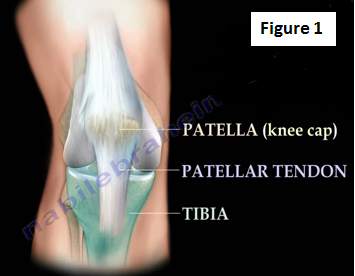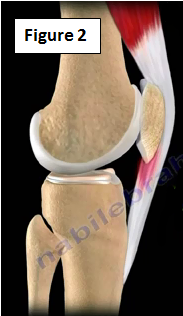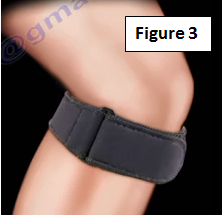The patellar tendon connects the kneecap to the tibia (Figure 1). The patella facilitates the function of the quadriceps to straighten the knee.
Patellar tendonitis is often referred to as "jumper's knee". It is an overuse condition that usually occurs in sports athletes who perform repetitive jumping activities. Patellar tendonitis commonly causes pain in the inferior patella area just below the knee cap and affects about 20% of jumping athletes (Figure 2).
Jumper's knee can occur above the patella, below the patella, or at the tendon insertion into the tibia. The most common area for patellar tendonitis to occur is just below the kneecap. Examples of sports activities that are typically associated with patellar tendonitis include; basketball, volleyball, soccer and it may also occur in runners.
It is a common cause of pain in the inferior patellar region. It occurs due to irritation of the tendon and progresses to tearing and degeneration. It is a degenerative process rather than inflammatory tendonitis. Palpation below the kneecap will reproduce the patient's symptoms.
X-rays will appear normal. MRI and ultrasound will show degenerative changes in the tendon and tendon hypertrophy. Ultrasound with colored Doppler may show increased vascularity. Examine the patient for flexibility of the lumbar spine as well as the hamstring and quadriceps tendon. Stiffness may cause patellar tendonitis.
Treatment
Treatment for jumper's knee will include anti-inflammatory medication, rest, ice, physiotherapy, stretching and strengthening and activity modification. A patellar tendonitis strap is worn to help relieve knee pain that is caused by patellar tendonitis (Figure 3).
Injections can be used around the tendon. The physician should not inject steroids into the tendon. Early stages of patellar tendonitis will respond well to non-operative treatment. Needling with injections of PRP (platelet rich plasma) is probably another option; however, it has not proven to be successful in larger series (Figure 4).
When the patient continues to have pain during activity and also at rest, conservative treatment will not work. If conservative treatment fails for 6-12 months, surgical treatment is indicated. Surgery consists of excision of the degenerated parts of the tendon at the inferior part of the patella.
For more information on Patellar Tendonitis, follow the links below:
https://www.youtube.com/watch?v=H9QXILgB9Mw
https://www.youtube.com/watch?v=YBRV_ouF4YY
For information on other topics, visit my YouTube Channel:
https://www.youtube.com/user/nabilebraheim



